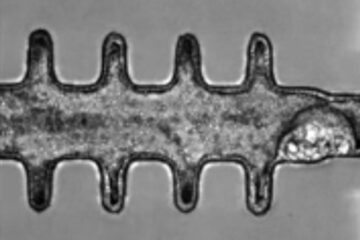Towards a unified model of transcription termination

The allosteric, or antiterminator, model proposes that transcription of the poly(A) site triggers conformational changes that destabilize the elongating RNA polymerase, resulting in termination. The torpedo model proposes that an exonuclease degrades the nascent RNA, and eventually catches up to the elongation complex, causing its termination.
Using a novel experimental system to study the function of the exonuclease Rat1 in yeast, Dr. Bentley’s team now shows that while the exonucleases Rat1 and Xrn1 do degrade the nascent RNA transcript, this degradation is not sufficient to cause polymerase termination. Rather, Rat1 helps recruit cleavage and polyadenylation factors that are necessary for termination. “As is often the case with competing hypotheses like the torpedo and allosteric models for transcription termination, neither one can explain the whole story, but aspects of both are correct, and these form the basis for a unified model,” explains Dr. Bentley.
Media Contact
More Information:
http://www.cshl.eduAll latest news from the category: Life Sciences and Chemistry
Articles and reports from the Life Sciences and chemistry area deal with applied and basic research into modern biology, chemistry and human medicine.
Valuable information can be found on a range of life sciences fields including bacteriology, biochemistry, bionics, bioinformatics, biophysics, biotechnology, genetics, geobotany, human biology, marine biology, microbiology, molecular biology, cellular biology, zoology, bioinorganic chemistry, microchemistry and environmental chemistry.
Newest articles

Solving the riddle of the sphingolipids in coronary artery disease
Weill Cornell Medicine investigators have uncovered a way to unleash in blood vessels the protective effects of a type of fat-related molecule known as a sphingolipid, suggesting a promising new…

Rocks with the oldest evidence yet of Earth’s magnetic field
The 3.7 billion-year-old rocks may extend the magnetic field’s age by 200 million years. Geologists at MIT and Oxford University have uncovered ancient rocks in Greenland that bear the oldest…

Mini-colons revolutionize colorectal cancer research
As our battle against cancer rages on, the quest for more sophisticated and realistic models to study tumor development has never been more critical. Until now, research has relied on…





















